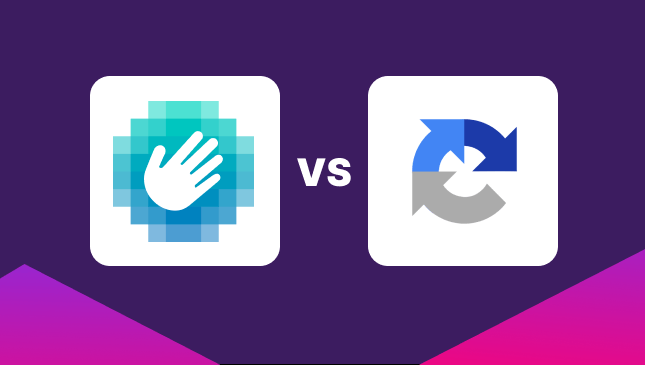Why Paid Ad Scams Flourish in the Social Media Age
Yoav Keren
|Marketing | March 22, 2022

This is a guest blog from BrandShield.
Considering the prevalence of online scams through ads these days, it makes one wish you could reverse time to the days when adults were not glued to their phones and businesses stuck to billboards and televised advertisements.
The advent of the internet and social media allowed businesses to promote their products to their target audience. However, it also brought an avenue for scammers to defraud customers of their hard-earned money through fake ads like Pay-per-click (PPC) and other impersonation methods.
Pay-per-click (PPC) ad fraud happens when faulty ads impersonate genuine brands or authorized brand sellers, lure innocent customers into clicking the ads, and interact with the landing page or social account.
Facebook marketplace, in fact, is now riddled with scammers using various means to obtain money from innocent buyers and sellers. Some of their schemes include charging an insurance fee for shipping luxury goods, requesting payment before the buyer sees the goods physically.
What are Typical Scams?
It’s no news that ad scams take different forms. Scammers are always quick to come up with new methods of carrying out their fraudulent schemes. Once a scheme starts to fail, probably because law enforcement agencies have caught on and implemented safety measures against it, without wasting much time, scammers would invent another scheme. In short, the game between law enforcement agencies and ad scammers is no different from whack-a-mole.
One of the ways ad scammers defraud brands is through PPC ads using a brand’s name or slogan. To draw victims, scammers place ads at the top of Google search results. These ads look similar to that of brands, wallets, and platforms. However, they contain a link to an already prepared website. This website is designed to look like the brand’s site. Once the web user lands on the first page, they begin to trick him into revealing details. Web users fall victim to this scheme believing the ad and site to be that of the actual brand.
This particular situation occurred in 2018 when the highest-ranked search result for “Amazon” led to a scam site. This malicious ad ranked even higher than the real site, Amazon.com. Whoever clicked the ad was directed to a page where they would be lured to call a number. The page itself was designed like an Apple or Windows support page. Also, trying to dismiss the pop-up on the page only expanded the view to look like ransomware.
On Facebook, the scam is usually within an almost irresistible ad displaying promises of a good product at a low price. These scam ads display products ranging from cosmetics, accessories to health supplements. The success of Facebook owes largely to the fact that the real ads are almost indistinguishable from the fake ones. Once a Facebook user falls victim to this scam, the product purchased, if delivered at all, is a far cry from what the scammer posted.
Why Social Media is Perfect to Promote Fake Ads
There are some who claim that social media is a necessary evil. Whether that assertion is true or not, we do know that social media has impacted our world in no small measure. Without a doubt, social media has broken grounds in terms of making communication faster. It has also made it a lot easier for brands to reach their target audience. With an active social media platform, all a brand needs to do is find ways to attract massive followers and post new products to create awareness.
Unfortunately, brand owners are not the only ones who have realized the money-making benefits of social media. Scammers have plugged into the trend as well with nefarious schemes. In fact they seem to have more success using social media platforms than any other means. As stated earlier, the popular means of social media scam is brand impersonation.
Scammers find it very easy to impersonate popular brands. They set up an account with similar features as the brand they intend to impersonate which costs nothing and takes little effort. Once the account is set up, they begin to rein in innocent customers through posts that makes the account seem legitimate. Usually, the next step is to begin to solicit for funds whether in exchange for a non-existent product or for charity.
Another factor that indirectly aids the success of social media fraud is the trust most people seem to have in the brand they are transacting with. They believe the brand would not allow an active fraudulent account. But in most cases, brand owners do not know about the existence of these accounts. Also, blind trust in social media features is one of the factors that makes people fall victim to scams.
How do companies suffer from ads scam?
To a large extent, brand success depends on the trust customers repose in the brand. Once trust is damaged, such brand is on a rollercoaster to its downfall. When scammers target a brand and its customers, they set up a scheme that lures customers to a fake page and induce them to make a purchase. The customer either ends up losing the money or gets counterfeit in return. The brand, on the other hand, loses both the customer and the profit they would have earned.
However, the greatest blow to brands in the event of a scam is the damage to their reputation. If one client is successfully defrauded, the brand might lose the business of ten customers in consequence of the fraud. This is because the embittered customer might leave a terrible review of the brand which would discourage other customers. If steps are not taken to curb the attack of scammers on a brand, the brand stands the risk of being perceived as facilitating the scams. Once a brand’s reputation is soiled, the business cease to thrive.
Notably, the aim of scammers is not always about counterfeiting. The aim, for some, is to obtain details. Obtaining personal details of clients through login forms is no less fatal both to the brand and client. This information may be used for a digital security breach or infiltrate brand networks.
What can Companies do to Protect Customers?
Detect Fake Data: When scammers successfully increase click rates, only the brand’s due diligence can stop their ad funds from going down for nothing. Firstly, advertisers need to be aware that ad fraud happens and their brand is in no way immune to the plague. Then, research and monitoring should be conducted on the advertisement network. A good knowledge of concepts such as brands key performance index and average data will tip the brand off when fraud is involved. Armed with this knowledge, the brand can detect inaccurate or fake data in reports.
Technological solution: In cases of fraud through domain spoofing and ad injection, there are tech solutions that may be applied for constant monitoring of paid ads platforms including Social Media ads, detect fraudulent ad networks, and take actions efficiently.
Create awareness: Companies can also inform customers on their real sites and digital assets in general, and educate them how to notice genuine goods and messages.
What Can You do to Protect your Brand?
In truth, there are scammers out there who would destroy your brand for their own selfish gain. It is up to every brand to protect itself against scammers. It is not enough to rely on ad protection plans by social media operators.
It does not matter how much your brand is active on social media platform, you should monitor Social Media platforms regularly. Review all social media accounts using your brand name. Detect all Social Media ads using your brand name or logo. Research the landing page or account, and try to detect complete networks od fake ads or fake ad publishers.
Take active steps against Social Media ad scams. Don’t fold your arms until customers get scammed and begin damage control. One way to take an active step is by using automated detection and threat prioritization to fish out scam pages before customers even click ads that link to those pages.
From time to time, switch up your strategy. Find new ways to tackle scams. Scammers are constantly finding new schemes to evade security systems while still defrauding customers.
Most scammers use more than one digital channel to sell products that breach infringement laws and use phishing scams to target consumers. To detect threats like this, you need a network analysis technology to find out the connection between these seemingly disparate accounts, web pages, online stores, etc. and eliminate the entire network in one clean move.
P.S.
Want to protect your sites and ads? Click here to request a demo.











